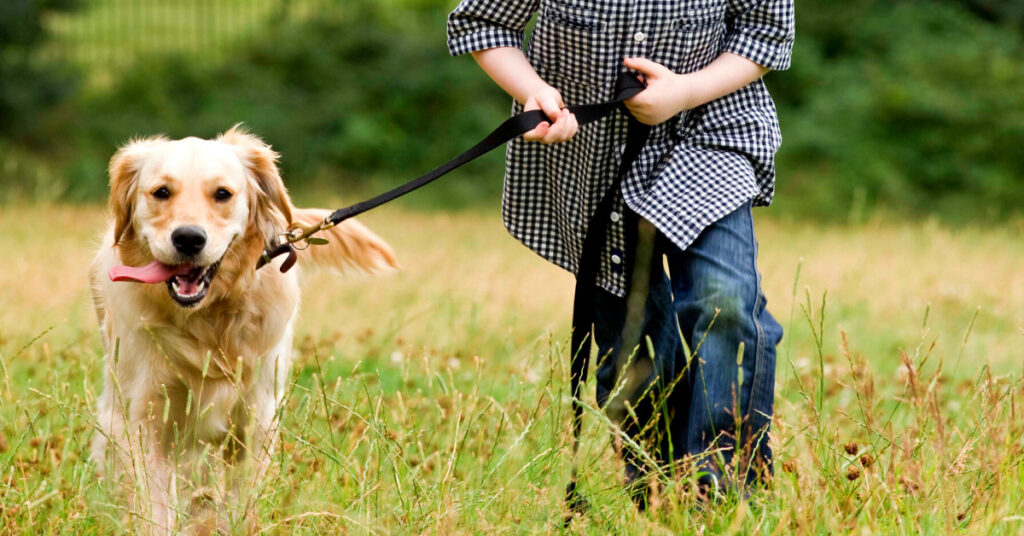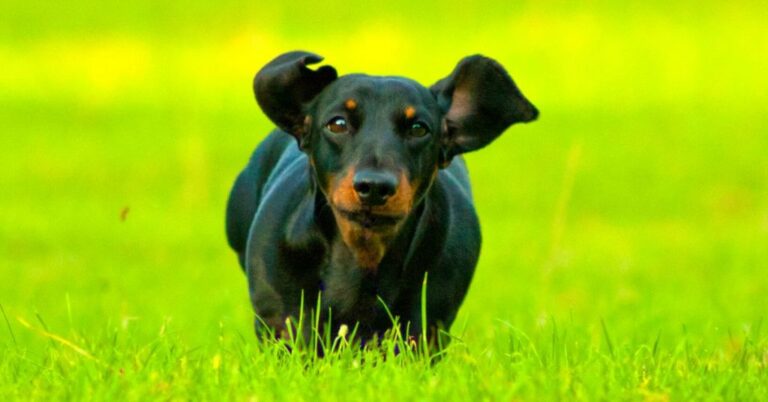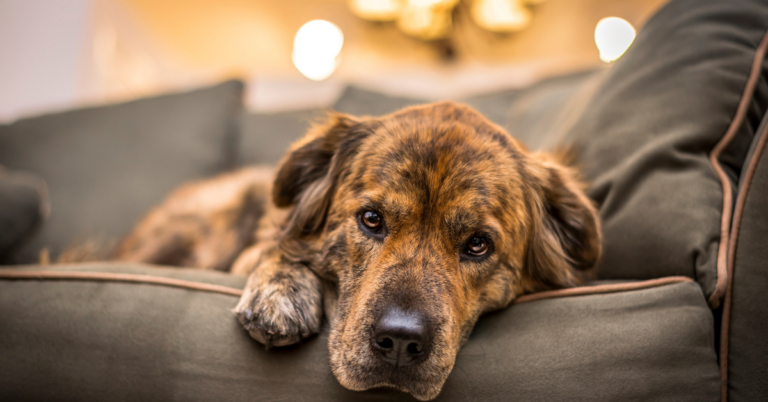Signs of Hip Dysplasia in Dogs
Hip dysplasia in dogs is a condition that affects the hip joint.
It can affect any size or type of dog. However, large and giant breed dogs are more prone to this condition.
This painful illness can dramatically affect a dog’s quality of life and is frustrating to watch for owners.
The good news is that learning about hip dysplasia can go a long way toward ensuring your dog’s comfort.
Learn about the signs of hip dysplasia in dogs, as well as treatment choices and preventative actions you can take to keep your dog healthy, happy, and active.
What is Hip Dysplasia in Dogs?

Hip dysplasia is a growth-related deformation of the hip joint. The hip joint is a ball and socket joint.
Both the ball and the socket in the pelvis must grow at the same time during development.
This regular growth does not occur in hip dysplasia, which causes looseness of the joint, and pain. This will cause degenerative joint disease (DJD), muscle deterioration, and restricted mobility.
Large-breed dogs are the most typically affected, and research indicates that it is inherited. Golden retrievers are commonly affected too.
What Causes Hip Dysplasia in Dogs?

Hip dysplasia is a hereditary illness that is caused by a variety of factors including food, activity, growth rate, muscle mass, and hormones.
It’s mostly common in large breed dogs like the Great Dane, Saint Bernard, Labrador Retriever, and German Shepherd. Generally dogs that are larger than 22 kg.
Puppies of large breed dogs should be fed normal quantities, to encourage slow and normal growth.
Overweight German Shepherd puppies were nearly twice as likely to have hip dysplasia as their normal-weight peers, according to a research.
Food companies have been able to develop specifically tailored meals for giant breed puppies as a result.
Slowing the growth of these breeds allows their joints to mature without being overworked, reducing the risk of hip dysplasia and other health issues.
Consult your veterinarian about the best food and diet for your dog, and the exercise routine they need each day to be in good physical shape.
Keeping your dog in good physical shape can help in reducing the risk of developing hip dysplasia.
Signs of Hip Dysplasia in Dogs
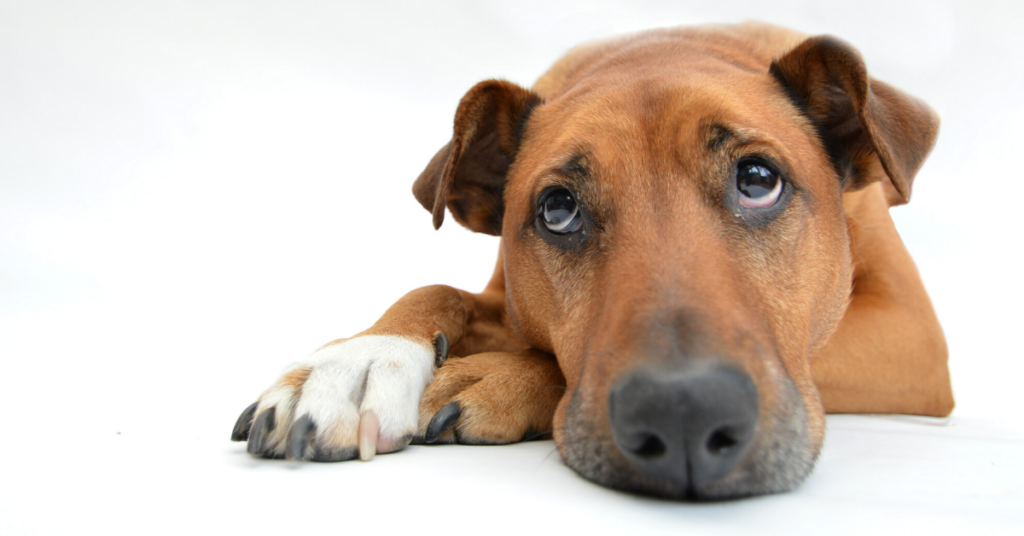
Hip dysplasia signs can appear on dogs as young as four months of age. Dogs with mild hip dysplasia may develop minor arthritis without showing any clinical signs until they are older.
It can take years for a dog to show signs of hip dysplasia after years of slow bone degradation.
Signs of hip dysplasia vary depending on how severe the disease is, level of inflammation, and degree of laxity in the joint.
Signs of hip dysplasia include:
- Limited mobility
- Difficulty jumping, running, or going up the stairs
- Limping
- Lameness in the hind end
- Grinding in the joint during movement
- Thigh muscle mass loss
- Enlargement of the shoulder muscles as a compensation for the hind end
Diagnosis of Hip Dysplasia in Dogs

If you suspect your dog has hip dysplasia, it’s better to take them to the vet for a physical exam.
The vet will try to move and feel your dog’s hind legs to test the looseness of the joint, and to check for any grinding, pain, or reduced range of motion.
A history of your dog’s health and symptoms, as well as any possible accidents or injuries that may have contributed to these symptoms, will be required by your veterinarian.
Blood tests may be required as well. However, the most reliable diagnosis is doing an X-ray.
Your veterinarian will take radiographs of your dog’s hips to determine the degree and severity of hip dysplasia, which will help in determining the best treatment option for your dog.
Treatment of Hip Dysplasia in Dogs
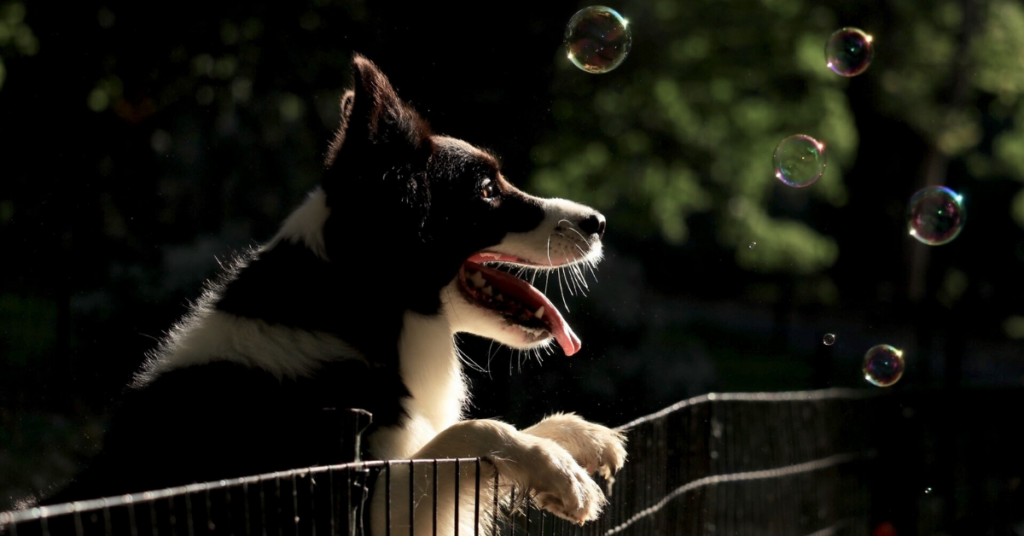
Hip dysplasia in dogs can cause long-term arthritis, which can be reduced or even prevented with early diagnosis.
There are various treatment options for canine hip dysplasia, including a few surgical alternatives as well as medications.
Treatment of hip dysplasia depends on the clinical signs, and level of discomfort, or severity of the disease.
Nonsurgical Treatment
Nonsurgical treatment options include prescribing non-steroidal anti inflammatory drugs NSAIDS.
The vet may also prescribe joint supplements like glucosamine, chondroitin sulfate, and omega-3 fatty acid.
Many dogs with painful hip dysplasia will benefit from regular injections of polysulfated glycosaminoglycan.
In addition, balanced daily exercise, and avoiding high-impact activities like jumping, can help keep the dog’s flexibility.
Alternative treatment options like physical therapy, acupuncture, class 4 laser, stem cell treatments, and traditional Chinese medicine have all been used to treat hip dysplasia.
Acupuncture has been proven to improve muscle strength, joint mobility, and pain relief.
Surgical Procedures
If the vet decides that the surgical option is best for your dog. Surgical intervention has an excellent prognosis and can restore normal function and allow dogs to live a normal life.
There are different surgeries that can be performed. The most common surgeries for hip dysplasia are:
- Double or triple pelvic osteotomy (DPO/TPO)
- Femoral head ostectomy (FHO)
- Total hip replacement (THR)
Triple pelvic osteotomy surgery is mainly performed on young dogs under the age of ten months.
The function of the ball and socket joint is improved in this operation by cutting the pelvic bone selectively and rotating the segments.
Femoral head ostectomy surgery can be done on both young and older dogs. The femoral head, or “ball,” of the hip joint is cut off during surgery.
As a result, the body creates a “false” joint, which alleviates the pain associated with hip dysplasia.
FHO surgery does not restore normal hip function. However, it can be an effective pain management method.
Total hip replacement is the most successful surgical treatment for hip dysplasia in dogs. The surgeon uses metal and plastic implants to replace the whole joint.
This restores hip function and relieves the discomfort associated with hip dysplasia.
Prevention of Hip Dysplasia in Dogs

Prevention of hip dysplasia is not possible in all cases. However, there are some precautions you may do to lower your dog’s risk of having the condition.
You can keep your dog’s skeletal system healthy by feeding your puppy a well balanced diet, to improve their bones, and joint development.
Provide your dog as they grow with good levels of exercise along with a healthy diet, to prevent obesity, which contributes greatly to hip dysplasia.
If your dog is genetically prone to hip dysplasia, you can do X-rays to identify the condition of your dog’s hips.
Breeders can use Orthopedic Foundation for Animals health testing to check the condition of their dogs’ hips, and ensure that only pups with hip joints rated normal grade or higher are bred.
When to See a Veterinarian
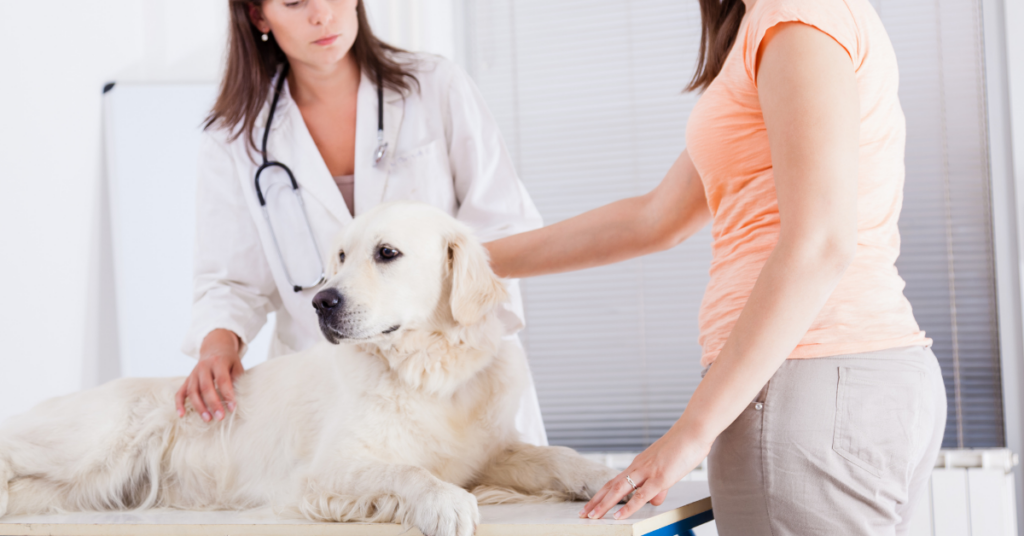
If you suspect that your dog is suffering from hip dysplasia, and have signs like limping, or difficulty moving and getting up. It’s best to visit your veterinarian.
In addition, if you have a large breed dog like Great Dane, Saint Bernard, Labrador Retriever, and German Shepherd. It’s best to take them to the vet as early as possible for early diagnosis.
Early diagnosis of hip dysplasia helps in decreasing or preventing the long-term arthritis that is caused by hip dysplasia.
Dogs with hip dysplasia can live long and happy lives, especially if they receive proper treatment.
Consult your veterinarian if you believe your dog may be affected. There are a variety of treatment choices and lifestyle modifications you can make to keep your dog happy and healthy.

